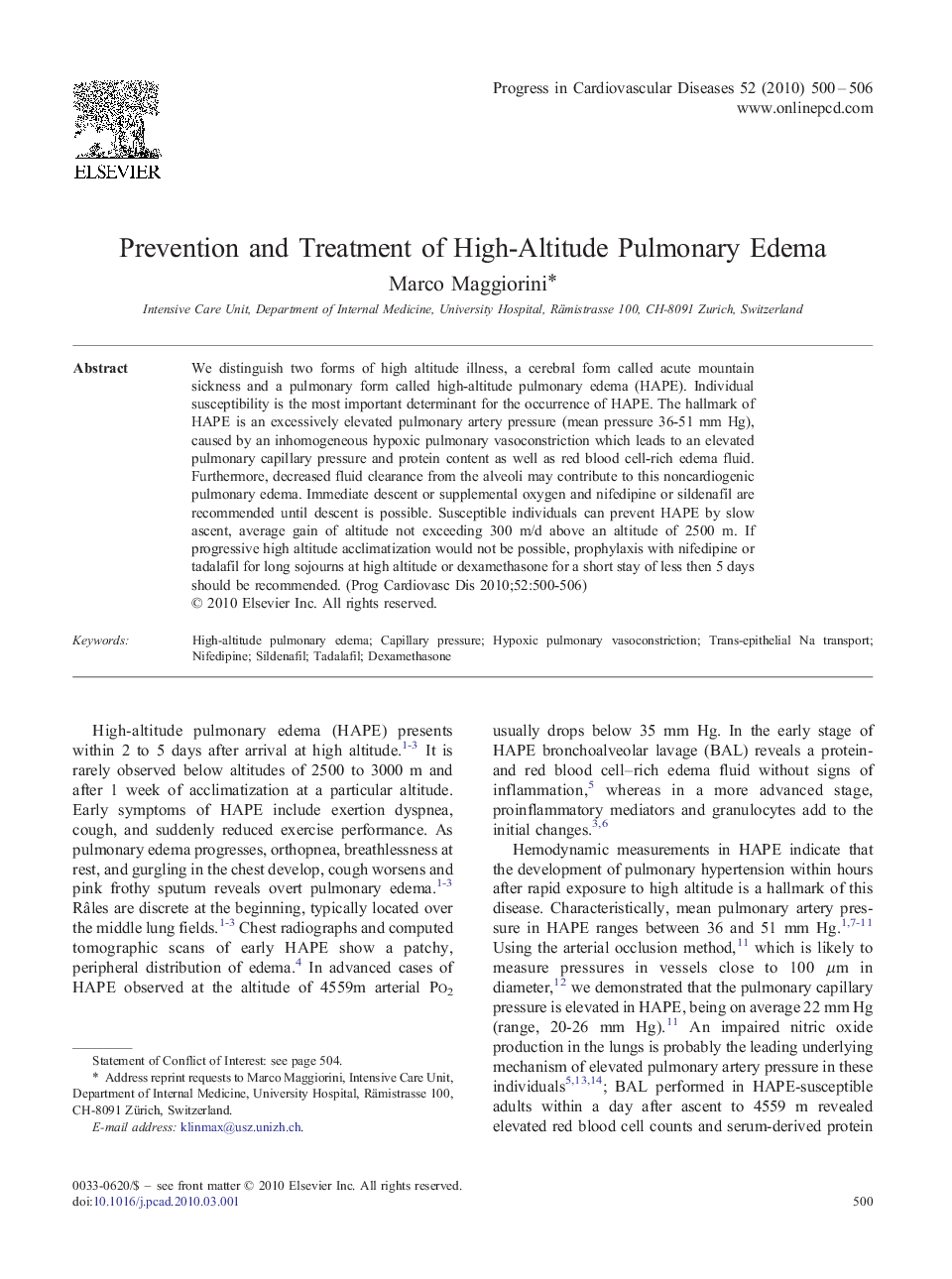| Article ID | Journal | Published Year | Pages | File Type |
|---|---|---|---|---|
| 3006947 | Progress in Cardiovascular Diseases | 2010 | 7 Pages |
We distinguish two forms of high altitude illness, a cerebral form called acute mountain sickness and a pulmonary form called high-altitude pulmonary edema (HAPE). Individual susceptibility is the most important determinant for the occurrence of HAPE. The hallmark of HAPE is an excessively elevated pulmonary artery pressure (mean pressure 36-51 mm Hg), caused by an inhomogeneous hypoxic pulmonary vasoconstriction which leads to an elevated pulmonary capillary pressure and protein content as well as red blood cell-rich edema fluid. Furthermore, decreased fluid clearance from the alveoli may contribute to this noncardiogenic pulmonary edema. Immediate descent or supplemental oxygen and nifedipine or sildenafil are recommended until descent is possible. Susceptible individuals can prevent HAPE by slow ascent, average gain of altitude not exceeding 300 m/d above an altitude of 2500 m. If progressive high altitude acclimatization would not be possible, prophylaxis with nifedipine or tadalafil for long sojourns at high altitude or dexamethasone for a short stay of less then 5 days should be recommended.
